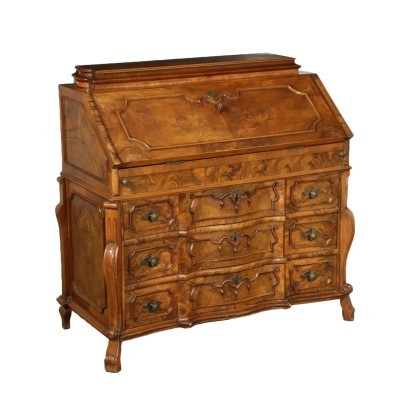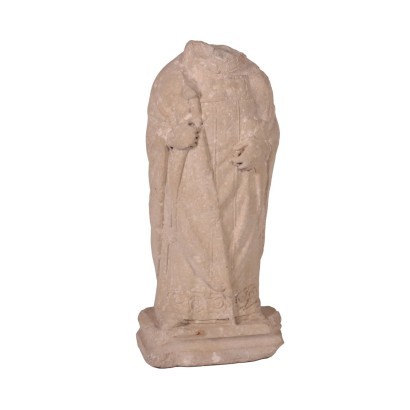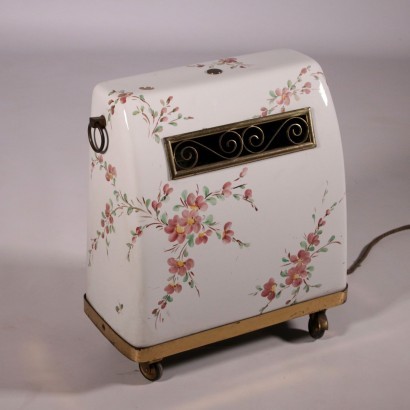Flap in Style
Features
Age: 20th Century / 1901 - 2000
Origin: Italy
Material: Plywood , Walnut Burl
Description
Flap in style supported by curled feet, on the wavy front it has three drawers surmounted by two pullers to hold an opening flap door concealing a cabinet with chest of drawers; in the upper part upstand with side secret drawers. Veneered in walnut and briar of walnut, the interiors are in cherry, the bottoms of the drawers in plywood.
Product Condition:
Product in fair condition showing some signs of wear.
Dimensions (cm):
Height: 107,5
Width: 115
Depth: 54
Additional Information
Age: 20th Century / 1901 - 2000
20th Century / 1901 - 2000Main essence:
Cherry
Obtained from prunus cerasus , a plant of oriental origin, it is a hard wood with a light and delicate color, with a reddish vein. Due to its diffusion and availability it was used in Europe in popular furniture. In cabinet making, in the seventeenth century, it was widely used in France and England for inlay work. In Italy it was very successful in Lucca. It was also very popular in the United States for the manufacture, from the late 1600s, of commonly used furniture.The dictionary of antiques: Eclecticism
Classic Monday: a sofa from the 1800s example of eclecticism
Walnut
Walnut wood comes from the plant whose botanical name is juglans regia , probably originally from the East but very common in Europe. Light or dark brown in color, it is a hard wood with a beautiful grain, widely used in antique furniture. It was the main essence in Italy throughout the Renaissance and later had a good diffusion in Europe, especially in England, until the advent of mahogany. It was used for solid wood furniture and sometimes carvings and inlays, its only big limitation is that it suffers a lot from woodworm. In France it was widely used more than anything else in the provinces. In the second half of the eighteenth century its use decreased significantly because mahogany and other exotic woods were preferred.Material:
Plywood
Walnut Burl
It could also interest you



































